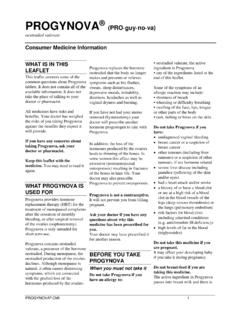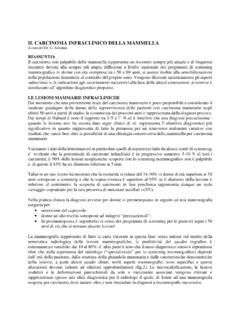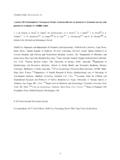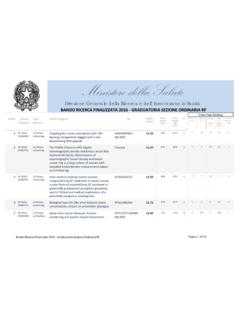Transcription of A Review of Breast Cancer Research in Malaysia - e …
1 A Review of Breast Cancer Research in Malaysia CH Yip, FRCS*, N Bhoo Pathy, MD**, SH Teo, PhD**. * Department of Surgery, Faculty of Medicine, 50603 Kuala Lumpur, ** Department of Social and Preventive Medicine, Faculty of Medicine, 50603 Kuala Lumpur, ** Cancer Research Initiatives Foundation (CARIF), Outpatient Centre, Subang Jaya Medical Centre, Subang, 47500 Selangor, Malaysia SUMMARY from 1996 to 2014 on 30th April 2014 using the key words Four hundred and nineteen articles related to Breast Cancer Breast Cancer Malaysia and reviewed 421 articles. Of these, were found in a search through a database dedicated to 154 abstracts were considered relevant to clinical practice by indexing all original data relevant to medicine published in the authors [a Breast surgeon, a genetic epidemiologist and an Malaysia between the years 2000-2013. One hundred and fifty epidemiologist] and full text articles were reviewed. The aim of four articles were selected and reviewed on the basis of this Review article is to summarise what has already been clinical relevance and future Research implications.
2 Overall, published on Breast Cancer in Malaysia , to discuss the impact Malaysian women have poor survival from Breast Cancer and of the Research findings to clinical practice, and to identify gaps it is estimated that half of the deaths due to Breast Cancer in Breast Cancer Research in Malaysia . could be prevented. Five-year survival in Malaysia was low and varies among different institutions even within the same disease stage, suggesting an inequity of access to optimal SECTION 1: Review OF LITERATURE. treatment or a lack of compliance to optimal treatment. Malaysian women have poor knowledge of the risk factors, INCIDENCE AND PRESENTATION OF Breast Cancer . symptoms and methods for early detection of Breast Cancer , The National Cancer Registry (NCR) 2003-2005 reported an leading to late presentation. Moreover, Malaysian women age-standardised rate (ASR) of per 100 000. The incidence experience Cancer fatalism, belief in alternative medicine, and is highest in Chinese ( per 100 000) followed by Indians lack of autonomy in decision making resulting in delays in ( per 100 000) and Malays ( per 100 000)1.
3 The Penang seeking or avoidance of evidence-based medicine. There are Cancer Registry 2004-2008 reported an incidence of 48 per ethnic differences in estrogen receptor status, HER2. 100,0002. The International Agency for Research in Cancer overexpression and incidence of triple negative Breast Cancer (GLOBOCAN) 2012 estimated the ASR of Breast Cancer in which warrant further investigation. Malay women present Malaysia as per 100,000 with 5410 new cases in 20123. with larger tumours and at later stages, and even after adjustment for these and other prognostic factors (stage, Malaysian women present at earlier age compared to women pathology and treatment), Malay women have a poorer in Western countries. A collaborative study between two tertiary survival. Although the factors responsible for these ethnic academic hospitals in Malaysia , and Singapore found that differences have not been elucidated, it is thought that approximately 50% of women were diagnosed before the age pharmacogenomics, lifestyle factors (such as weight-gain, of 50 years4, whereas in most Western countries such as UK and diet and exercise), and psychosocial factors (such as Netherlands, 20% are diagnosed before age 50.)
4 Two factors acceptance of 2nd or 3rd line chemotherapy) may be account for the younger mean age at presentation in Malaysia . responsible for the difference in survival. Notably, First, Malaysia has a younger demographic with median age survivorship studies show self-management programmes and of years, compared with years in United Kingdom5. exercise improve quality of life, highlighting the need to Second, the current older population in Malaysia , experience evaluate the psychosocial impact of Breast Cancer on lower-risk lifestyle factors (more children, more Breast -feeding Malaysian women, and to design culturally-, religiously- and and lower urbanisation) and this cohort effect results in lower linguistically-appropriate psycho-education programmes to risk of post-menopausal Breast Cancer . help women cope with the disease and improve their quality of life. Research done in the Caucasian populations may not Malaysian women present at later stages compared to women necessarily apply to local settings and it is important to in Western countries and Singapore6-8 but presented at earlier embark on local studies particularly prevention, screening, stages compared to Indonesian women9.
5 Presentation of Breast diagnostic, prognostic, therapeutic and psychosocial Cancer varies substantially not only among countries, but also Research . within different settings in Malaysia . Table I summarises the stage at presentation, tumour size and age in different settings in Malaysia2,8,10-13. Delayed presentation remains very KEY WORDS: Breast Cancer , Malaysia , Review , genetics, screening, common14 and a collaborative study in Malaysia , India and diagnosis, prognosis, treatment, outcome Hong Kong showed that inadequacies of health care infrastructures and standards, sociocultural barriers, economic realities, illiteracy, and the differences in the clinical and INTRODUCTION pathological attributes of this disease in Asian women Besides the articles searched through the database, we also compared with the rest of the world together result in conducted a literature Review of articles indexed in PubMed significant proportion of late stage disease15.
6 In Malaysia , Corresponding Author: 8 Med J Malaysia Vol 69 Supplement A August 2014. A Review of Breast Cancer Research in Malaysia ethnicity, education level, socio-economic status and access to free37. Early experience of the genetic testing and risk treatment centres in urban areas were found to be important management clinic for high risk Breast and ovarian Cancer factors influencing stage at presentation. By combining the families in UMMC showed that only of eligible women hospital-based Breast Cancer databases in University Malaya chose to attend this clinic, 24% chose to have risk reducing Medical Centre (UMMC) and National University Hospital mastectomy (RRM) while the rest chose Breast surveillance. Singapore (NUHS) [5264 patients], it was found that the Malay Sixty-three percent chose to have risk reducing salphingo- ethnicity was significantly associated with larger tumours at oophorectomy38. presentation and later stages at presentation, compared to the Chinese and to a certain extent, the Indians16.
7 Late stage at Of the high risk women who did not have germline BRCA. presentation of Breast Cancer had been attributed to a strong mutations, four mutations in TP53 (5%) suggested that TP53. belief in traditional medicine, the negative perception of the screening should be considered in women with early onset disease, poverty and poor education, coupled with fear and Breast Cancer (<35 years old)39. PALB2 mutations were also denial17. In Sabah, patients who presented with advanced reported and screening with nine PALB2 mutations found two disease were also poor, non-educated and from rural areas13. novel truncating mutations and ten missense mutations, and one additional PALB2 mutation indicating a low prevalence of LIFESTYLE AND GENETIC RISK FACTORS TO Breast Cancer PALB2 mutations40. A truncating mutation (1100delc) in the A number of lifestyle and genetic factors cause an increased cell cycle checkpoint kinase -2 gene (CHEK2), a common risk of Breast Cancer and these have been shown to increase risk moderate penetrance allele found in Caucasians, was not of Breast Cancer in Malaysian women.
8 Table II summarises found in any of the cohort of 668 Breast Cancer patients, results from case control studies involving Malaysian women18-29. suggesting that screening for this allele should not be routinely Well-known risk factors such as nulliparity, family history, not conducted in Malaysia41. Other genes or genetic loci associated breastfeeding and use of oral contraceptives are observed to be with Breast Cancer have also been reported including the associated with an increased risk of Breast Cancer in Malaysian human leukocyte antigen (HLA) types42, and other loci of lower women, but other risk factors are not significantly associated penetrance43. ( age at menarche and first childbirth). However, these studies are retrospective and may be underpowered to find SCREENING AND EARLY DETECTION. statistically significant results. To date, no study has examined One of the main determinants of survival from Breast Cancer Breast mammographic density and the extent to which ethnic- is early detection, which in turn is dependent on disease differences in Breast mammographic density is associated with awareness and uptake of screening (both opportunistic and risk of Breast Cancer .)
9 Population-based screening). However, Breast Cancer awareness is poor in Malaysian women and very few eligible women Genetic predisposition also play a role in the aetiology of Breast attend regular mammography screening. Table III summarises Cancer . Approximately 15% of Breast Cancer patients report results of cross-sectional studies, utilising surveys and self- family history of Breast and ovarian Cancer , and the most administered questionnaires, that have been carried out in the significant genetic predisposition genes identified are BRCA1 Malaysian community to assess knowledge of Breast Cancer and BRCA2. Cohort studies have shown the prevalence of and screening methods Breast self-examination (BSE), BRCA1 and BRCA2 among Breast Cancer patients of and clinical Breast examination (CBE) and screening respectively, which is consistent with other Asian ethnic mammography44-61. Notably, even among high-risk women, a groups 30-31. Large genomic rearrangements (LGRs) constitute cross-sectional study of 131 women with a family history of 8% of BRCA1 and 4% of BRCA2 mutations, and a number of Breast Cancer showed that 71% had poor knowledge about the novel rearrangements have been reported, suggesting that risk factors for Breast cancer62 and women with a family history comprehensive BRCA testing should include detection of of Breast Cancer probably did not recognise their increased risk LGRs32,33.
10 To Cancer and so presented with same stage of disease as women with no family history of Breast cancer63. Many studies Two algorithms to predict the presence of mutations, have shown that symptom recognition remains an important Manchester Scoring System and BOADICEA, were evaluated public health issue in Malaysia , highlighting the pressing need and found that the predictive power of these two models were to continue to educate women, their significant others, and significantly better for BRCA1 than BRCA2, and that the overall primary health care workers64. sensitivity, specificity and positive predictive value was lower in this population than previously reported in the Caucasian To date, the only reported outreach programme, which was population34. Notably, Breast cancers associated with BRCA1 conducted over a 4-year period in Sarawak, showed that mutations are more likely to be triple negative for estrogen, training health staff in hospital and rural clinics to improve progesterone and HER2 receptors, and of higher grade; BRCA2 their skills in early Cancer detection, and raising public associated Breast cancers were similar to non BRCA associated awareness through pamphlets, posters and sensitisation by Breast cancers35.

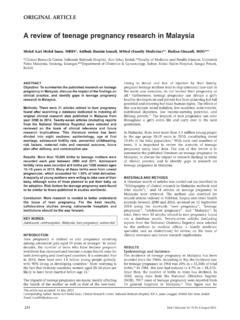


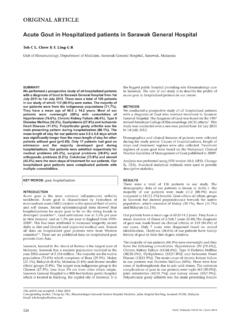

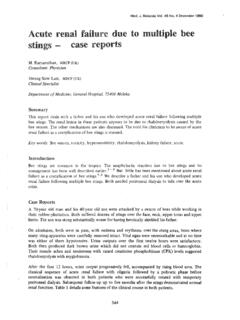
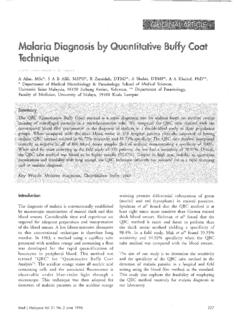



![[Product Monograph Template - Standard]](/cache/preview/f/9/7/c/8/1/3/1/thumb-f97c8131495ab4887eae21b91c1e72e4.jpg)
